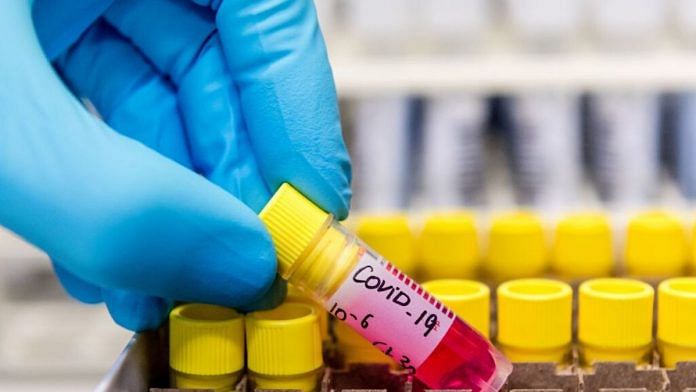It’s easy to see why people might be frustrated with the mathematical models that the world’s leaders have been using — and abusing — to decide how to respond to the coronavirus pandemic. First they said the U.S. might have 2.2 million deaths, then 60,000, then 100,000. One day it seems we’re all going to die, and the next it’s time to reopen.
That said, the better models contain a valuable element: the reproduction rate, or the number of people each sick person is likely to infect. Known as R(t), it’s important for understanding what might happen and how our behavior can change the outcome.
R(t) tells us how fast the disease is spreading at a given moment. If it’s greater than one, the growth is exponential: One case can become a million in a matter of weeks. If it’s less than one, the pandemic is petering out. It reflects both the nature of the virus and the measures people take to avoid infecting one another. It also tends to decline naturally: as time goes on, more people get sick, recover and hence become immune, leaving fewer to infect.
R(t) can explain a lot. Consider, for example, how soon a place might reach herd immunity — the point at which enough people become immune that the disease can no longer spread exponentially. Let’s say the initial reproduction rate — known as R(0) — is 3, the best estimate for the coronavirus. When everyone is susceptible, three people will get sick from the average infected person. But if two out of three are already immune, only one will get sick. R(t) will be 1.
In other words, there’s a predictable mathematical relationship. If R(0) is 3, the threshold for herd immunity is two thirds of the population. If R(0) is 4, the threshold is three fourths. Note that’s a lower bound, and doesn’t necessarily apply to pockets of society — such as nursing homes, prisons or crowded bars — where the local R(t) is higher.
So what does this mean for the U.S.? If R(0) is 3 and the population is 330 million, then about 220 million must get infected to achieve herd immunity. If the death rate is 1%, that’s 2.2 million fatalities, assuming no change in social practices. This also happens to be what the now-famous Imperial College London model originally estimated back in mid-March.
But people in the U.S. have changed their social practices. They have stayed at home and started using masks, helping to push R(t) down below 1, judging from the declining daily numbers of fatalities. There also might be some effect from growing immunity, but it’s minor, given that infections probably don’t exceed 4% of the population. So while the country remains very far from herd immunity, Americans have managed to postpone a lot of deaths, ideally until a vaccine can be developed.
In the meantime, R(t) can still be useful. Tracked closely across states with different mitigation strategies, it can help calculate which practices and scenarios have the biggest effect. For example, we’re learning it’s rare to get infected with the coronavirus outside. Hello parks and barbeques. We’ve similarly learned how long it lasts on surfaces, how safe groceries are, how well surgical masks protect us. Just how bad is a baseball stadium with an open roof? Let’s compute its contribution to R(t) and see if we can afford it.
The more data we have, the more we’ll be able to focus on what works, and eschew measures where the cost outweighs the benefit — all with an eye toward keeping R(t) below 1. As a result, maybe life can be a little bit better as we inch toward the end of this ordeal. –Bloomberg
Also read: India’s ‘R’ value falls to 1.22, but active Covid-19 cases could reach 1 lakh by 30 May



